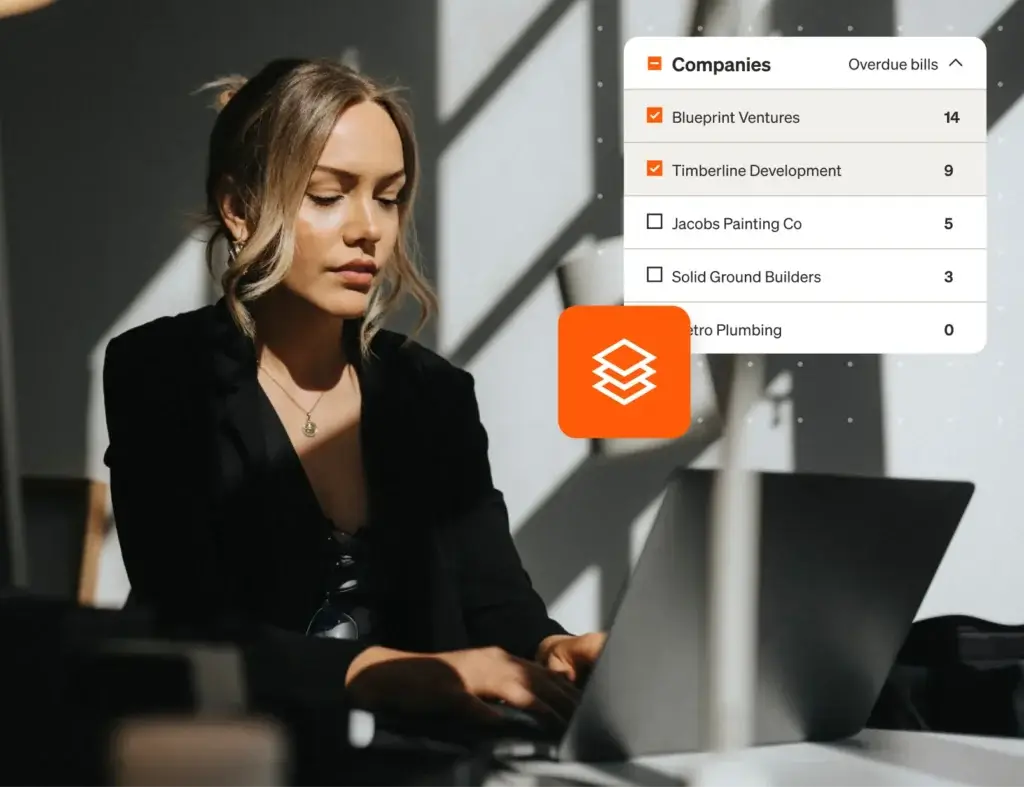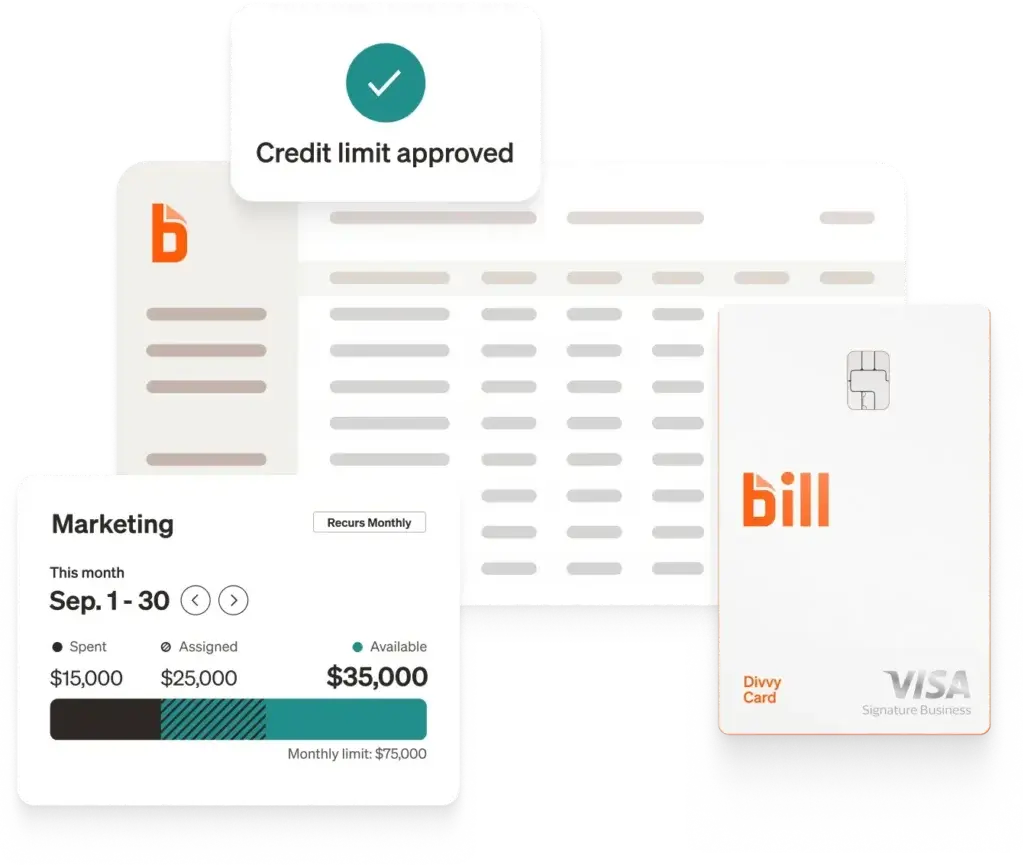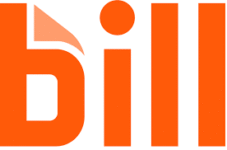Accounts payable (AP) and accounts receivable (AR) are the lifeblood of any organization. Managing invoices, paying vendors, and maintaining a steady cash flow can quickly become complex when done manually. That’s where Bill.com, officially rebranded as BILL, comes in. This comprehensive bill review guides you through everything you need to know about the platform, including features, pricing, pros, cons, and alternatives. By the end, you’ll know whether BILL is the right fit for your company.
Overview of BILL and Its Role in Financial Operations
What BILL Does for Businesses
BILL is a cloud-based software solution designed to automate and streamline your AP and AR workflows. Instead of juggling paper invoices, spreadsheets, and emails, you can capture bills digitally, route them for approval, and schedule payments electronically. On the receivables side, you can issue invoices, accept multiple payment methods, and track collections in real-time. By connecting with leading accounting platforms, BILL creates a central hub for your financial operations.
Why Automate AP and AR?
Manual invoice processing is slow and error-prone. You might misplace paperwork, miss early-payment discounts, or forget to send reminders. Automation solves these problems by digitizing every step. Bills are uploaded, routed to the right approvers, and paid on time. Automation cuts down on data entry and reduces the risk of duplicate payments or missed invoices. When your AR processes are automated, you get paid faster and improve cash flow. In a competitive B2B landscape, streamlined billing processes free you to focus on strategic growth.
Software specification
Key Features of BILL
Accounts Payable Automation
With BILL, you can ingest invoices via email, mobile app upload, or drag-and-drop. Optical character recognition (OCR) captures vendor details and line items, reducing manual entry. You then assign approval workflows based on amounts, departments, or vendor categories. Approvers receive notifications and can approve from their desktop or mobile device. Once approved, payments are scheduled through ACH, check, virtual card, or international wire. You can also track payment status and gain real-time visibility into outstanding bills.
Key highlights include:
- Multi-level approval workflows tailored to your internal controls
- Support for ACH, paper checks, virtual cards, international wires, and pay-by-card options
- Built-in audit trail so you always know who approved and when
Accounts Receivable Management
On the receivables side, BILL lets you generate professional invoices with your branding and custom fields. You can create one-off or recurring invoices and automatically send payment reminders. Customers can pay via ACH, credit card, or check, and those payments sync back to your general ledger. Real-time tracking of outstanding invoices helps you forecast cash inflows more accurately and reduce late payments.
Benefits of BILL AR include:
- Branded invoice templates with customizable fields and logos
- Automated reminders to encourage on-time payments
- Real-time dashboard showing invoice status (sent, viewed, paid)
Pay by Card & Spend & Expense Management
BILL’s Pay by Card feature allows you to pay vendors with your corporate credit card even if they don’t accept cards directly. BILL charges your card, then pays the vendor via ACH or check. This improves cash flow by using your card’s payment grace period and can earn reward points. There is a 2.9% transaction fee, so weigh the benefits against the costs.
Bill’s Spend & Expense platform (formerly Divvy) offers corporate cards, expense controls, and budgeting tools at no monthly cost. You set budgets by department or project, issue physical or virtual cards, and categorize expenses in real time. Everything syncs back to your accounting system, eliminating manual receipt management. If you’re looking for a combined AP automation and spend management tool, this integration is a key differentiator.
Vendor Management and Cash Flow Forecasting
The platform keeps a centralized vendor directory with contact information, payment preferences, and history. You can invite vendors to join BILL’s network, which speeds up payments and reduces errors. Automated cash flow forecasting shows how upcoming payments will affect your bank balance, helping you plan for large expenses or seasonal fluctuations.
Integration with Accounting Platforms
One of the strengths of BILL is its ecosystem of integrations. The software works with popular accounting and ERP systems such as QuickBooks Online, QuickBooks Desktop, Xero, NetSuite, Sage Intacct, Sage 50, and Microsoft Dynamics. By syncing payables and receivables, you reduce duplicate data entry and maintain a single source of truth. Integration ensures that bills, invoices, and payments automatically update your general ledger, reducing reconciliation work at month-end.
Security and Compliance Measures
Handling financial data comes with inherent risks. BILL uses bank-level encryption, role-based permissions, and multi-factor authentication to protect sensitive information. It adheres to SOC 1 and SOC 2 compliance standards, and the platform includes built-in audit trails to support compliance with regulatory requirements. For added security, Bill.com provides separation of duties so no single user controls every step of the payment process.

How BILL Works
Setup and Uses
Setup and Onboarding
Getting started with BILL is straightforward. After signing up, you enter your company information and connect your bank accounts. You then import your vendor and customer lists from your accounting software or CSV files. Next, you configure approval workflows by assigning approvers and spending limits. BILL offers a 30-day free trial, so you can test the platform without financial risk.
Creating and Paying Bills
Once your vendors are added, you can upload invoices via email, the BILL web app, or the mobile app. The OCR engine reads the invoice and populates fields like vendor name, invoice number, date, and amount. You verify the information, code the expense to the correct account, and send it through your chosen approval chain. Approvers receive notifications and can approve or reject with comments. After approval, you schedule the payment method and date. BILL then handles the rest, sending the vendor a check, ACH payment, virtual card, or international transfer. You can monitor payment status and see a clear audit trail for every transaction.
Using the Mobile App
The BILL mobile app (iOS and Android) lets you snap photos of invoices, view pending approvals, and approve bills on the go. You can also view cash flow dashboards and receive alerts when approvals or payments are pending. If your team travels frequently or works remotely, the mobile app keeps processes moving without waiting for someone to return to the office.
Pros and Cons
A balanced view: what you’ll love and what to consider
Every ERP system has trade-offs, and NetSuite is no exception. While it offers powerful features that can transform how you manage finance and operations, it also comes with a learning curve and pricing that might not suit every team.
Let’s break it down clearly so you can decide if the benefits outweigh the drawbacks for your business.
Positive
✅ All-in-one platform
✅ Highly scalable
✅ Cloud-based access
✅ Deep reporting & analytics
Negative
❌ High upfront costs
❌ Steep learning curve
❌ Implementation time
❌ Customisation complexity
✅ Benefits of BILL
Saving Time and Reducing Errors
Manual data entry is one of the biggest sources of accounting errors. BILL’s OCR technology captures invoice details, while automated workflows ensure approvals happen promptly. You spend less time chasing signatures or correcting mistakes, and you avoid late payment fees. According to some users, BILL can cut AP processing time by up to 50%.
Improving Cash Flow and Visibility
You can see incoming and outgoing cash on a single dashboard, which helps you make informed decisions. Scheduled payments mean you never forget to pay a vendor or chase a client. Recurring invoices and automated reminders help you get paid faster. With Pay by Card, you can extend payment terms to match your cash flow needs and earn card rewards.
Scalability for Growing Businesses
As your business expands, complexity increases. BILL scales with you, supporting multiple entities and departments. You can set separate approval chains for different subsidiaries or divisions. The Enterprise plan offers API access for custom integrations, making BILL adaptable to unique workflows. Whether you add new vendors, employees, or locations, the platform can handle growth without major process changes.
Simplifying Audits and Compliance
Audit trails record every action: who uploaded the invoice, who approved, and when payment occurred. Role-based permissions ensure segregation of duties, reducing the risk of fraud. BILL’s adherence to SOC 1 and SOC 2 standards assures auditors and stakeholders. During an audit, you can quickly retrieve invoices and approval histories, which speeds up the review process.
❌ Potential Drawbacks and Limitations
Complex Verification and Setup
Some users report that the initial account verification can be cumbersome. BILL often requires additional documentation to prevent fraud, which may delay your first batch of payments. While this is a necessary security measure, be prepared to provide bank statements or identification before fully activating your account.
Pricing Surprises and Hidden Fees
Although the monthly subscription is transparent, transaction fees can add up, especially if you pay a large number of vendors via check or card. International payment fees vary based on exchange rates. To avoid surprise charges, review the fee schedule carefully and factor these costs into your budget.
Customer Support Issues
Customer feedback on support is mixed. Some users praise the availability of live chat and help center resources; others mention slow response times or difficulty reaching a representative by phone. Higher-tier plans offer faster support, so consider this if your business requires immediate assistance.

Pricing and Plans
How much does BILL cost?
The BILL mobile app (iOS and Android) lets you snap photos of invoices, view pending approvals, and approve bills on the go. You can also view cash flow dashboards and receive alerts when approvals or payments are pending. If your team travels frequently or works remotely, the mobile app keeps processes moving without waiting for someone to return to the office.
BILL offers several plans tailored to different business needs. Pricing is per user per month, and there is a 30-day free trial.
AP & AR Plans
- Essentials – $45/user/month. Suitable for small businesses with basic AP or AR needs. It includes invoice capture, electronic approvals, and ACH payments.
- Team – $55/user/month. Adds features like multi-level approvals, integration with accounting software, and automatic data syncing.
- Corporate – $79/user/month. Offers custom roles, advanced approval policies, international payments, and dedicated support.
- Enterprise – Custom pricing. Designed for larger or multi-entity organizations requiring customized workflows, API access, and premium support.
Spend & Expense Plan
For spend management, BILL offers a Spend & Expense plan at $0/user/month. You get corporate cards, credit lines ranging from $500 to $5 million, real-time budgeting, and expense controls. Because the plan earns revenue from card interchange fees, there is no monthly subscription cost. This is a strong option for businesses wanting to combine AP automation with employee expense management.
Partner Program for Accountants
Accounting and bookkeeping professionals can join the AP & AR Partner Program. This offers wholesale pricing, with discounts of 10–20% based on client volume. Accountants can manage multiple clients from one dashboard, and BILL provides training and marketing support. There is also a Spend & Expense Partner Program that extends free spend management tools to accountants and their clients.
Additional Fees
Beyond subscription costs, you should budget for transaction fees:
- Pay by Card: 2.9% fee per transaction for paying vendors by credit or debit card. You may recoup some of this cost through rewards points or cash-back.
- International Payments: While wire transfer fees are waived, foreign currency exchange rates apply and may vary.
- Check Payments: Sending paper checks incurs a small fee (often around $1.69 per check).
Pricing Comparison Table
| Plan | Monthly Cost (per user) | Key Features |
| Essentials | $45 | Basic AP or AR automation, electronic approvals |
| Team | $55 | Multi-level approvals, integrations, data sync |
| Corporate | $79 | Custom roles, advanced policies, global payments |
| Enterprise | Custom | API access, multi-entity, premium support |
| Spend & Expense | $0 | Corporate cards, budgets, real-time spend control |
Business Fit
Who Should Use BILL?
Small Businesses and Startups
If you operate a small team and want to move away from paper checks and spreadsheets, BILL’s Essentials plan could transform your AP process. The platform automates tasks that would otherwise require an in-house accountant, freeing up your time to focus on growth. BILL’s spend management tools can also simplify employee expenses, which is useful for startups scaling quickly.
Mid-Size and Multi-Entity Organizations
For mid-size companies with multiple departments or subsidiaries, the Team, Corporate, or Enterprise plans offer advanced approval workflows and multi-entity support. You can assign specific roles and permissions to each division and manage intercompany transactions more easily. The Enterprise plan’s API access allows integration with custom or industry-specific software.
Industry Use Cases
- Construction and Trades: BILL handles frequent vendor payments and change orders, and the mobile app lets project managers approve invoices from the field.
- Nonprofits: Automation reduces administrative burden and provides transparency for grant reporting. The spend management tools help enforce budget restrictions.
- Healthcare and Professional Services: BILL ensures HIPAA-compliant handling of sensitive vendor and client data, while automating the many invoices common in service-based industries.

Alternatives
BILL Alternatives & Competitors
BILL is not the only AP/AR automation tool on the market. Depending on your needs, another platform may be a better fit. Here’s how BILL compares to a few notable competitors.
Comparison Table: BILL vs Competitors
| Feature | BILL | Tipalti | Ramp | Brex |
| Focus | AP & AR automation | Global payables automation | Corporate spend management | Corporate cards & spend mgmt. |
| Starting Price | $45/user/mo | $149/mo (up to 2 users) | $0 base fee | $0 base fee |
| International Payments | Supports 130+ countries | Supports 190 countries | Limited | Limited |
| AR/Invoicing | Yes | Limited | No | No |
| Corporate Cards | Divvy cards via Spend & Expense | No | Yes | Yes |
Tipalti: Strong for global payables and tax compliance, with support for more currencies and countries than BILL. However, Tipalti’s starting price is higher, and AR automation is limited.
Ramp: Offers free corporate cards with cash-back rewards and built-in expense controls. It focuses on spend management rather than invoicing or AR. Ramp is ideal if you need a simple way to manage employee expenses but don’t require full AP automation.
Brex: Provides corporate cards, spend limits, and rewards geared toward startups and technology companies. Brex supports expense management and budgeting, but lacks in-depth AP automation and invoicing features.
Other alternatives include AvidXchange, Melio, QuickBooks Bill Pay, and Concur. When evaluating options, consider the volume of invoices you process, the complexity of your approval workflows, and whether you need integrated AR features.
Integrations and Ecosystem
Connect BILL to your favourite apps
Signing Up and Free Trial
To begin, visit BILL’s website and select a plan. During the 30-day trial, you can process invoices and payments to understand how the system works. At the end of the trial, decide which plan best matches your transaction volume and feature requirements.
Setting Up Workflows and Integrations
Spend time configuring your approval rules. Map each dollar threshold to the appropriate approver so there’s a clear chain of command. Connect your accounting platform through the integration settings; BILL walks you through the steps for QuickBooks, Xero, and other systems. Import vendor and customer details to avoid entering them manually.
Best Practices for Adoption
- Educate your team: Schedule onboarding sessions for employees who will submit, approve, or pay bills.
- Start small: Pilot BILL with one department or a handful of vendors, then expand once the workflow runs smoothly.
- Monitor usage: Use BILL’s analytics to review approval timelines and identify bottlenecks.
- Keep communication open: Encourage vendors to sign up for BILL’s network to receive payments faster. Provide training materials to help them understand the process.
Security and Compliance
Security and Compliance in BILL
Keeping your financial data protected is a top priority, and BILL includes strong security practices designed to safeguard sensitive information across every step of your AP and AR workflows.
Bank-Level Data Protection 🔐
BILL uses industry-standard encryption to protect data in transit and at rest. All payment information, vendor details, and financial documents move through encrypted channels. This ensures your team can upload invoices, approve payments, and sync accounting data without putting confidential information at risk.
SOC 1 and SOC 2 Compliance
BILL maintains compliance with SOC 1 and SOC 2 standards. These reports validate that internal controls, system operations, and data-handling procedures meet strict security benchmarks. If your accounting team works with auditors or manages multi-entity compliance, this level of certification helps reduce friction during audits.
Two-Factor Authentication and Access Controls
To help prevent unauthorized access, BILL supports two-factor authentication on all accounts. You can also set granular user permissions, restricting who can view invoices, approve payments, or manage banking information. This reduces the risk of internal fraud and keeps your AP/AR processes tightly controlled.
Audit Trails and Activity Logs
Every action within BILL is logged and timestamped. You can track when an invoice was uploaded, who approved it, and when a payment was processed. These built-in audit trails help maintain transparency, simplify compliance checks, and support year-end audits.
Fraud Detection and Payment Verification
BILL includes automated fraud monitoring and verification workflows to reduce the risk of fraudulent or duplicate payments. Vendor information is validated through BILL’s network, and suspicious activity triggers alerts so your finance team can investigate before payments are finalized.
Secure Integrations With Accounting Systems
Whether you use QuickBooks, Xero, NetSuite, or Sage Intacct, BILL syncs financial data through secure API connections. This eliminates unsafe file transfers and reduces manual data handling, helping your business maintain data integrity across systems.
Conclusion
Final Thoughts
Automating your AP and AR processes can drastically reduce manual work, minimize errors, and give you real-time insight into cash flow. BILL offers a robust set of features that blend invoice management, payment processing, vendor management, and spend control. Its integration options and security measures make it a strong contender in the accounting software landscape.
However, BILL isn’t perfect. Initial setup may require patience, and transaction fees can add to your costs. Support quality varies depending on your plan. Competitors like Tipalti, Ramp, and Brex may be better suited if you need extensive international capabilities or primarily want a corporate card solution. Ultimately, the right choice depends on your business size, transaction complexity, and budget.
By carefully evaluating your needs, testing the platform, and considering alternatives, you can select the best AP automation tool and focus on what matters – building your business.
Have more questions?
Frequently Asked Questions
What is BILL?
It is a cloud-based financial operations platform that automates accounts payable and accounts receivable. It digitizes invoice processing, approval workflows, and payment methods to reduce manual effort and improve accuracy.
How does BILL automate accounts payable and receivable?
The software uses OCR to capture invoice data, routes bills through customizable approval chains, and schedules payments via ACH, check, or card. For receivables, it generates branded invoices, sends payment reminders, and accepts payments online.
Is BILL secure for financial data?
Yes. BILL employs bank-level encryption, multi-factor authentication, and role-based permissions. It complies with SOC 1 and SOC 2 standards, providing an audit trail for every transaction.
How does it integrate with QuickBooks and other accounting software?
BILL offers built-in integrations with QuickBooks Online, QuickBooks Desktop, Xero, NetSuite, Sage Intacct, and other platforms. Once connected, bills, invoices, and payments sync automatically, eliminating double entry.
What are the main pricing plans?
Plans include Essentials ($45/user/month), Team ($55/user/month), Corporate ($79/user/month), and Enterprise (custom pricing). There is also a free Spend & Expense plan with corporate cards and budgeting tools.
Does BILL support international payments and multiple currencies?
Yes. It can send payments to over 130 countries and supports multiple currencies. Exchange rates apply, and there are no wire transfer fees, though currency conversion fees may vary.
What are the common pros and cons reported by users?
Pros include user-friendly dashboards, comprehensive AP/AR automation, seamless integrations, and multiple payment methods. Cons involve complex account verification, hidden transaction fees, and inconsistent customer support.
How does BILL compare to competitors like Tipalti or Ramp?
It excels in combining AP and AR automation with spend management. Tipalti is stronger for global payables but more expensive. Ramp and Brex focus on corporate cards and spend management rather than full AP/AR automation.
Who is the ideal user or business size for BILL?
BILL suits small to mid-sized businesses that need to automate invoices and payments. It also supports multi-entity organizations and industries like construction, non-profit, and healthcare. The Spend & Expense plan is ideal for teams needing corporate cards and budgets.
How do I get started with BILL and is there a free trial?
Sign up on BILL’s website, choose a plan, and take advantage of the 30-day free trial. During the trial, connect your accounting software, upload invoices, and test workflows to see if it meets your needs.







